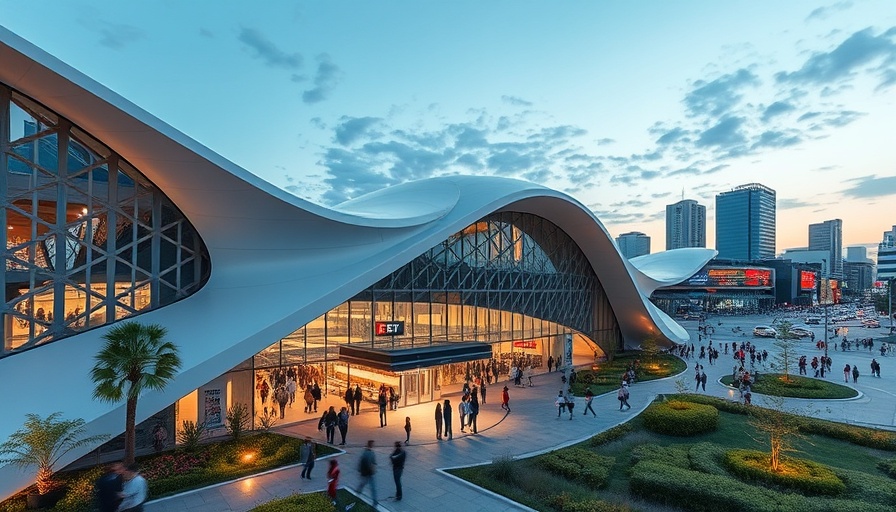
Reimagining Urban Spaces: The Vision Behind the KAFD Metro Station
In the bustling city of Riyadh, Zaha Hadid Architects (ZHA) has crafted a striking metro station that not only redefines public transportation but also embodies a vision of the future. The King Abdullah Financial District (KAFD) Metro Station is a centerpiece of the expansive Riyadh Metro project, designed to meet the demands of a growing urban population. This futuristic station is an essential part of a larger initiative that seeks to address traffic congestion and promote environmentally sustainable transit options in Saudi Arabia’s capital.
Revolutionizing Public Transportation for a Sustainable Future
The Riyadh Metro is the world’s longest automated rail network, spanning over 176 kilometers and encompassing six lines with 85 stations. It has been meticulously developed by the Royal Commission for Riyadh City, aiming to significantly reduce reliance on private vehicles and mitigate the challenges of urban congestion. With an anticipated capacity of 3.6 million passengers daily, this metro system stands as a beacon of innovation in urban mobility.
Public transportation is poised to play a critical role in the sustainability of future cities. By efficiently linking various modes of transportation, the KAFD Metro Station will facilitate smoother commutes and a more cohesive urban fabric. The integration of air travel, metro, and local monorail services will not only enhance accessibility but also encourage the use of public transit, ultimately benefitting the environment.
A Sculptural Wonder: Design Inspired by Movement
What truly sets the KAFD Metro Station apart is its avant-garde architecture. The design is characterized by a three-dimensional matrix of flowing forms that mimic patterns of movement—both human and environmental. By leveraging traffic modeling, the architects have created undulating sine waves that represent the station's dynamic character. This innovative approach influences the internal circulation and the aesthetic of the station's exterior, seamlessly connecting the architectural form with its function.
Constructed using precision-cast concrete panels, the facade of the station is a harmonious blend of form and function. It serves as a distinctive aesthetic element while also moderating the harsh desert climate. Drawing inspiration from traditional Middle Eastern shading techniques, the perforated outer shell effectively reduces heat gain, demonstrating how modern architecture can pay homage to cultural heritage while addressing contemporary environmental challenges.
Setting New Standards in Urban Design
The KAFD Metro Station exemplifies how forward-thinking design can intersect with practical urban planning. The central location within the financial district allows easy access to vital services and promotes pedestrian-friendly spaces, enabling a fluid transition between different modes of transport. This design philosophy encourages not just the use of public transport but also revitalizes public spaces—transforming territories into connected, vibrant urban environments.
Future Implications for Urban Mobility
As urbanization continues to accelerate globally, cities are increasingly faced with the need for innovative transportation solutions. The KAFD Metro Station is a concrete example of how architecture can shape the future of urban mobility—creating a model that other cities may look to replicate. The integration of advanced technology and sustainable design within the metro system could inspire similar initiatives worldwide.
The evolution of public transportation networks is vital not only for urban development but also for climate change mitigation. As communities around the world grapple with rising emissions and traffic congestion, embracing comprehensive public transit solutions like the Riyadh Metro may be necessary for sustainable urban progress.
Conclusion: A Step Toward Sustainable Urban Living
The KAFD Metro Station stands as a testament to the innovation and vision of architects and urban planners dedicated to transforming urban mobility. By blending aesthetics with functionality, this project is poised not just to ease congestion but to inspire future generations about the possibilities of sustainable urban living. As we look ahead, the lessons learned from KAFD's design can inform urban initiatives worldwide, showcasing the role of transportation in shaping the cities of tomorrow.
 Add Row
Add Row  Add
Add 






Write A Comment